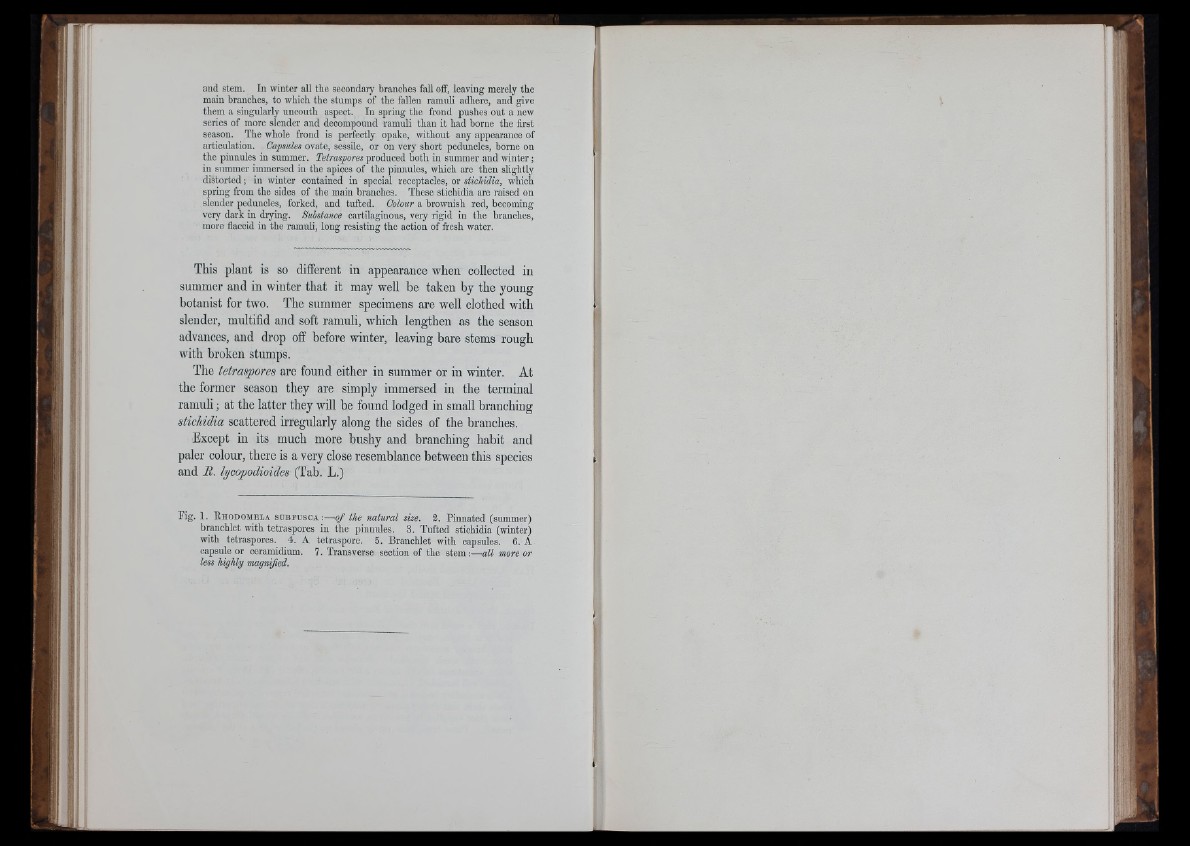
i
and stem. In winter all the secondary branches fall off, leaving merely the
main branches, to which the stumps of the fallen ramuli adhere, and give
them a singularly uncouth aspect. In spring the frond pushes out a new
series of more slender and decompound ramuli than it had borne the first
season. The whole frond is perfectly opake, without any appeai-ance of
articulation. Capsules ovate, sessile, or on very short peduncles, borne on
the pinnules in summer. Tetraspores produced both in summer and winter;
in summer immersed in the apices of the pinnules, which are then slightly
distorted; in winter contained in special receptacles, or stichidia, which
spring from the sides of the main branches. These stichidia are raised on
slender peduncles, forked, and tufted. Colour a brownish red, becoming
very dark in drying. Substance cartilaginous, very rigid in the branches,
more flaccid in the ramuli, long resisting the action of fresh water.
This plant is so different in appearance when collected in
summer and in winter that it may well be taken by the young
botanist for two. The summer specimens are well clothed with
slender, multifid and soft ramuli, which lengthen as the season
advances, and drop off before winter, leaving bare stems rough
with broken stumps.
The tetraspores are found either in summer or in winter. At
the former season they are simply immersed in the terminal
ramuli; at the latter they will be found lodged in small branching
stichidia scattered irregularly along the sides of the branches.
Except in its much more bushy and branching habit and
paler colour, there is a very close resemblance between this species
and B. lycopodioides (Tab. L.)
iig . 1. R h o d o m e l a s u b e u s c a :—of the natural size. 3. Pinnated (summer)
branchlet with tetraspores in the pinnules. 3. Tufted stichidia (winter)
with tetraspores. 4. A tetraspore. 5. Branchlet with capsules. 6, A
capsule or ceramidium. 7. Transverse section of the stem;—all more or